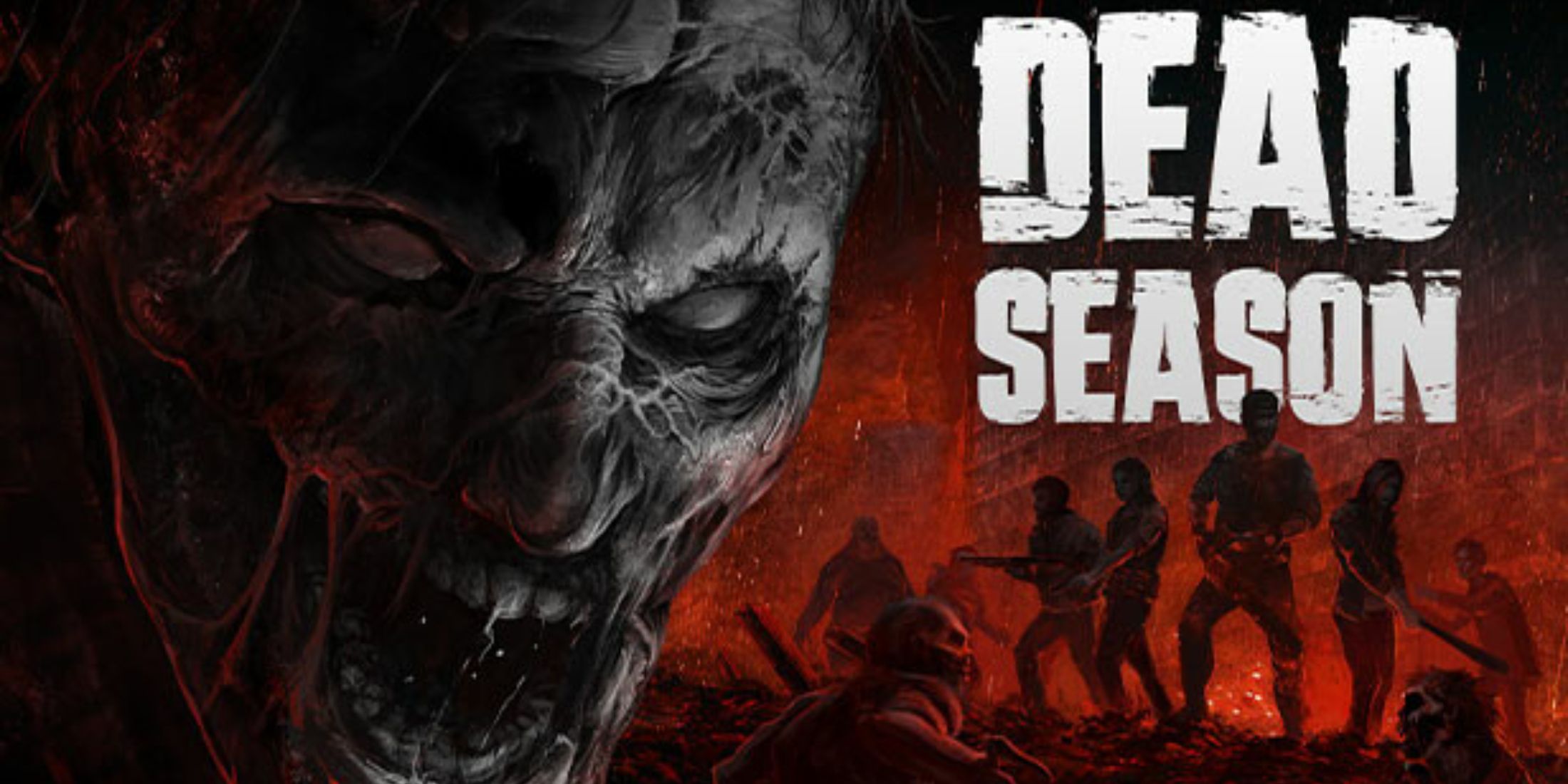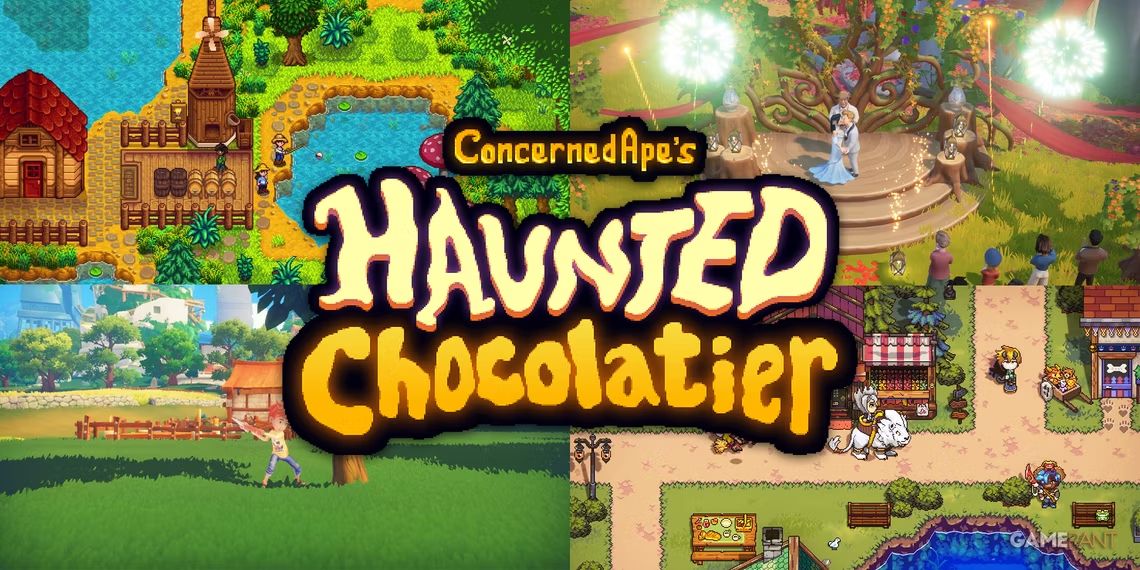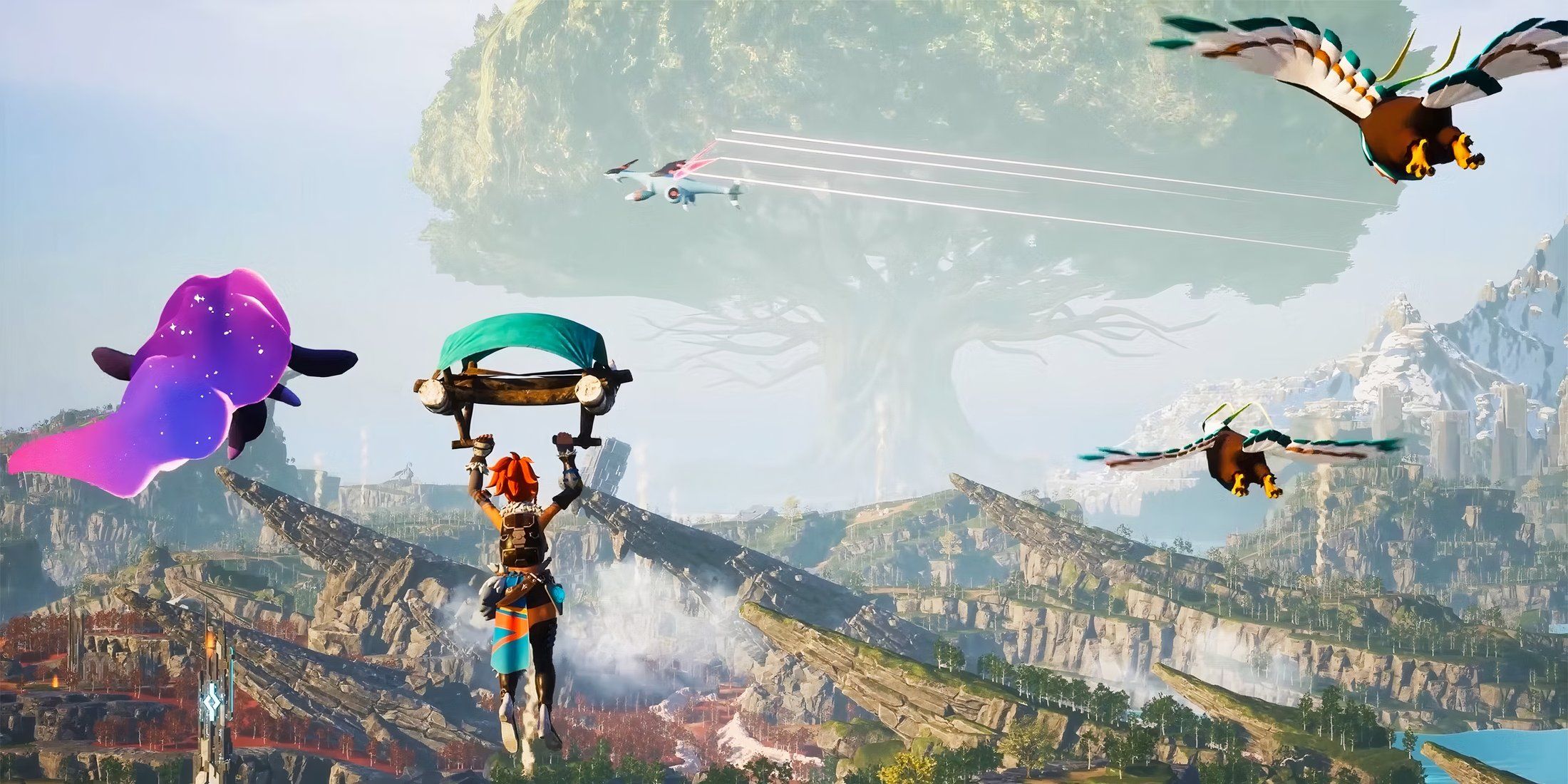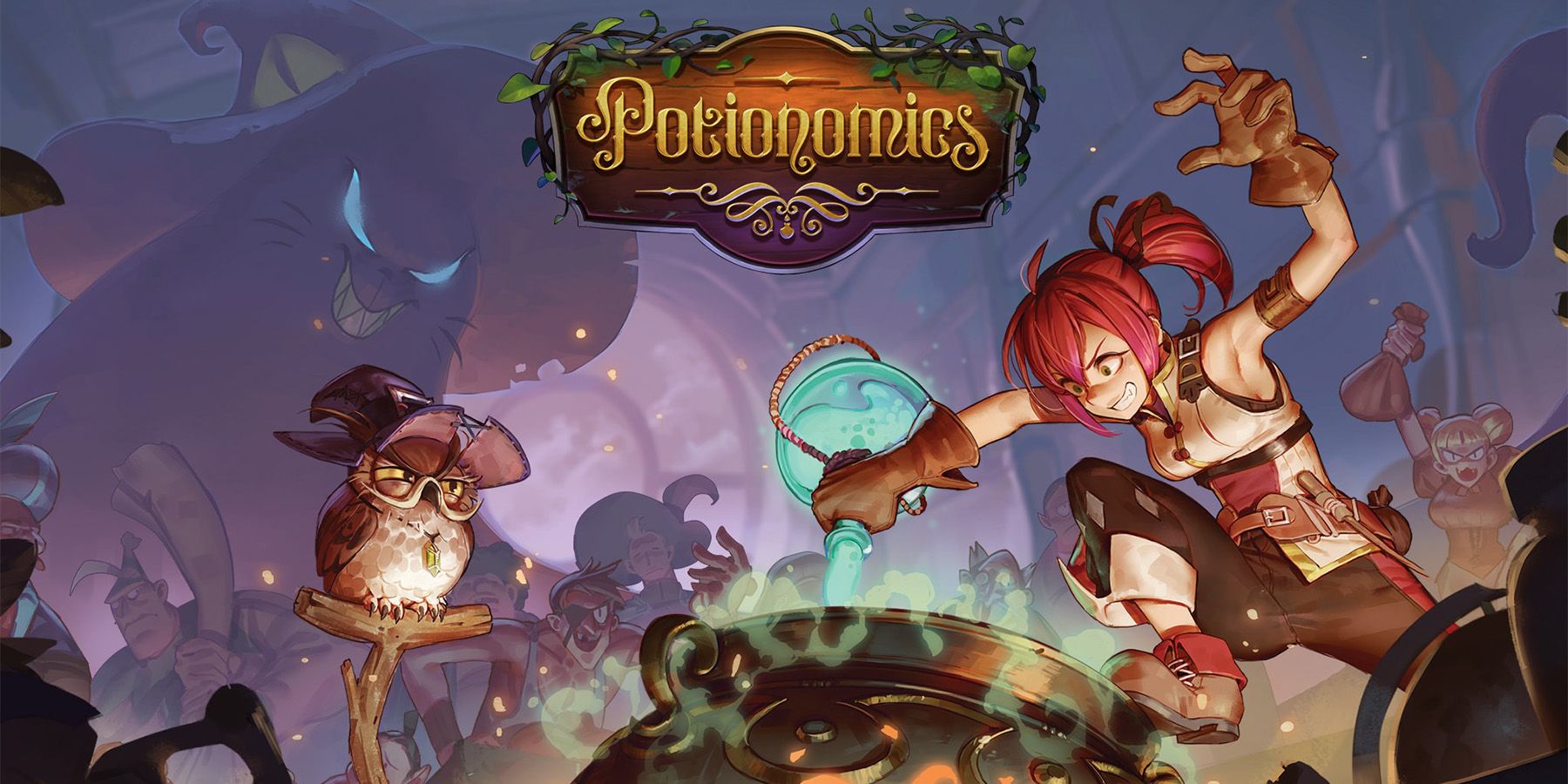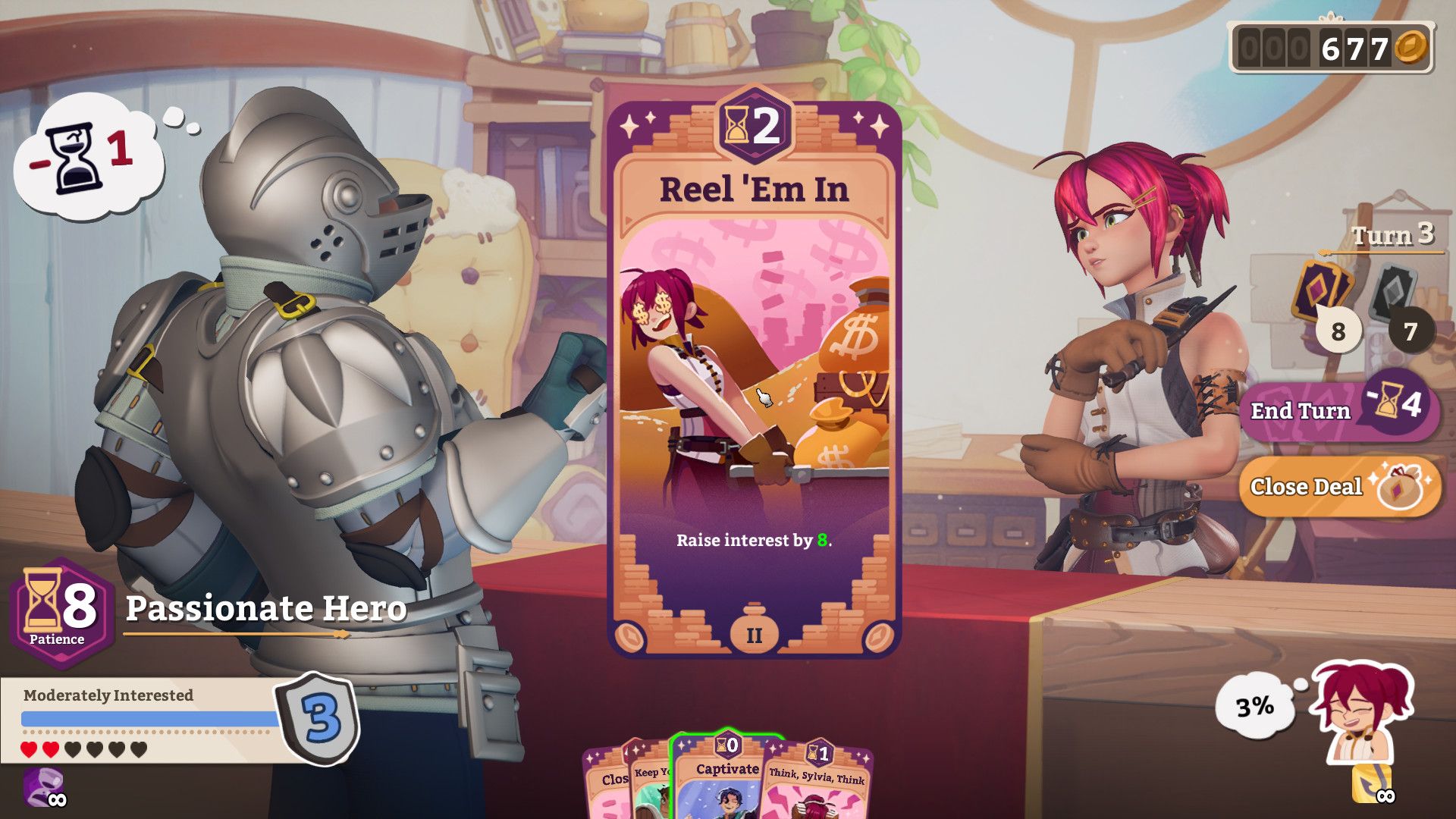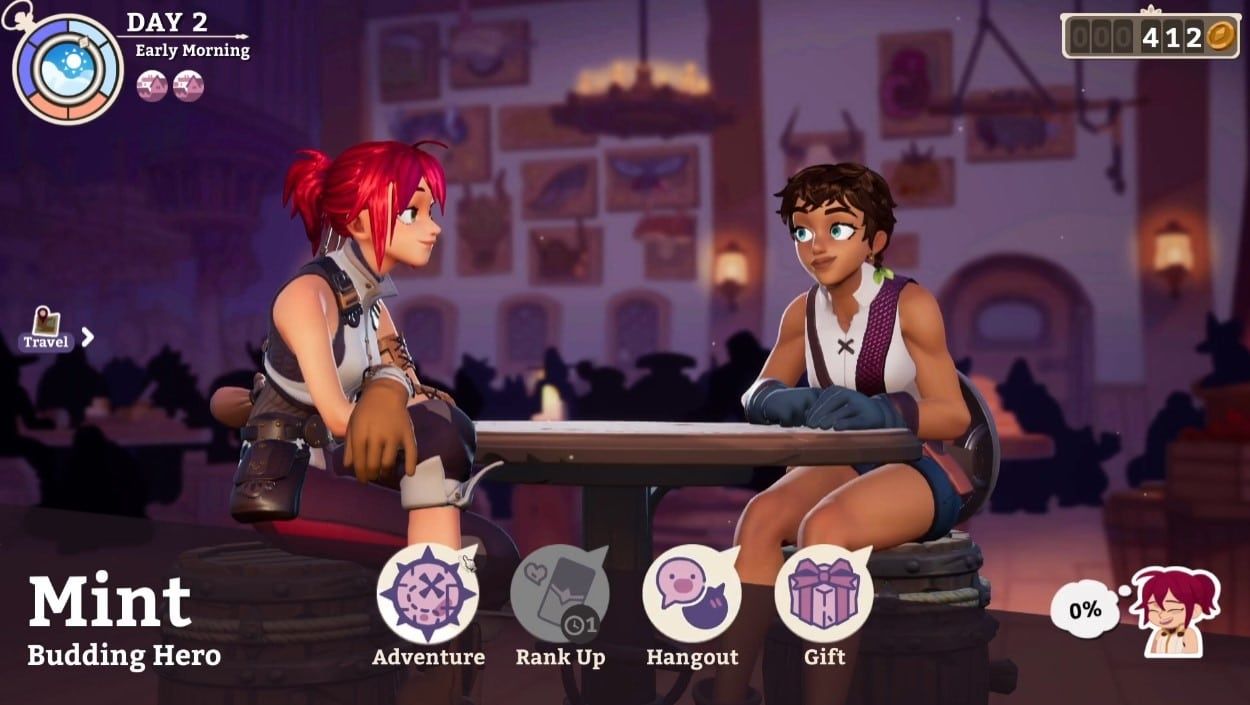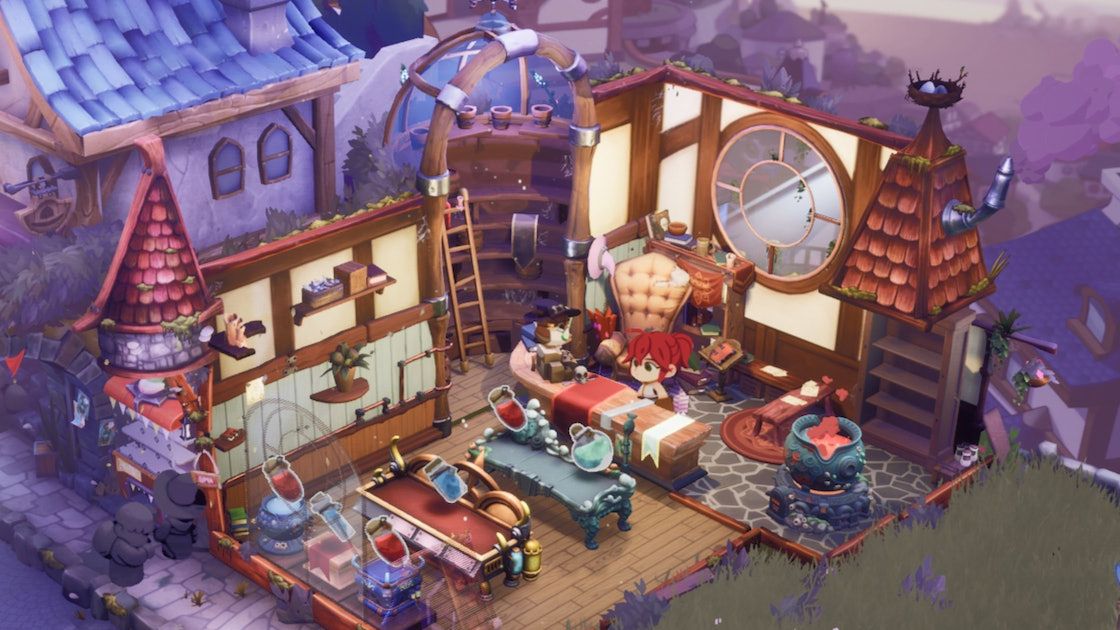In Potionoimics, players take control of Sylvia, a budding potions witch who has taken on her uncle's shop as well as his massive debt. The game is rife with colorful characters and a fantastical world helps ground the game, while also adding levity to an otherwise burdensome reality. Potionomics is an indie game available to play now on Steam, and it's a game that should speak to those who love humor, personality, and a touch of witchy magic.
Game ZXC spoke with Voracious Games co-founder Aryo Darmawan and writer/narrative designer Nick Eliopulos about the design of Potionomics and how the team achieved the comedic undertone of the game through its unique characters and magical world. The following interview has been edited for clarity and brevity.
GR: Please start off by introducing yourselves. In what capacity did you work on Potionomics?
Darmawan: I'm Aryo Jati Darmawan and a co-founder of the studio! I touched on many aspects of the game but predominantly focused on the game design and art direction.
Eliopulos: I’m Nick Eliopulos, writer and narrative designer for the game.
GR: Where did the idea for Potionomics come from, and how did it get from there to the game that’s available today?
Darmawan: I was inspired to create Potionomics by my passion for a Japanese game called Recettear. It was in the first Humble Bundle that I ever purchased, and I fell in love with the cute aesthetic and the brutal capitalism gameplay. As I was between jobs, I realized that it was the perfect time to pursue my dream of making my own video game. This has always been a dream of mine since playing games like Super Mario RPG when I was a kid. Eventually, the game looked like it was going to be something and I roped some of my friends along for the ride. With some life savings, some fortunate opportunities, and a few very close calls, we have arrived where we are today.
GR: Was the idea consistent throughout production or did you make any big, unexpected design changes along the way?
Darmawan: Nothing stayed the same for very long! For example, the original concept of haggling in the game closely resembled the Recettear formula, which was essentially a guessing game to determine the highest price a customer was willing to pay. However, I wanted to add more complexity to the haggling portions, so I decided to introduce the idea of drawing and playing cards. The cards represent different negotiation tactics you can employ and the player’s hand represents what’s going on in your brain as you’re trying to recall different negotiating strategies. This was actually the point when the game also became a relationship/dating sim, since we needed to have a way for the player to receive these haggling cards. This gameplay loop ended up being the core pillar of Potionomics, and it was a happy accident in some ways.
GR: Can you talk more about the relationship/sim aspect of the game you ended up with? How does it work and how does it affect the course of the gameplay?
Darmawan: Throughout the game’s story, Sylvia encounters a number of different characters who run their own businesses in one way or another. As you work your way towards befriending (or smooching) them, they offer valuable guidance in the form of negotiation cards that you can use when haggling with customers. Each card is based on the character’s personal negotiation style and their deck represents their general outlook on life. In a way, this emulates the experience of picking up your friend’s mannerisms as you hang out with them more and more. Who Sylvia is as a shopkeeper is molded by her experience and her friendships.
GR: Speaking of Sylvia and the other characters, it doesn’t take long to see there's a humor and underlying wit to their behavior and the way they speak. How did you craft the dialogue to achieve that comedic timing and delivery throughout the game?
Eliopulos: We started with the visual design! Before any dialogue was written, we collaborated as a team to come up with each character’s look and occupation, and their personalities and backstories naturally started forming as the visuals came together. We ended up with a bunch of characters who looked appealing and fun, and we wanted to make sure they were enjoyable to interact with, not just to look at. From there, we tried to keep the text as focused as possible, for fear of short attention spans. Making the characters witty was the best way we could find to ensure we were packing a lot of characterization into a small space.
GR: How did you manage to maintain that through line of wit while also giving each character their own, unique personality?
Darmawan: A lot of trial and error, drafting, and revision! When in doubt, we looked to other media. The game is a big love letter to a lot of games and shows that we like, particularly anime and JRPGs. Muktuk for example is this over-the-top character, and we knew his play style would involve enthusiasm and bravado. So we looked at Armstrong from Fullmetal Alchemist as a starting point to really nail his gusto. From there, we tried to put ourselves in the character’s shoes and really made an effort to investigate what they are all about.
GR: Beyond the characters, the overall mood of Potionomics feels fun and energetic. What parts of design do you think were instrumental in conveying that feeling of levity throughout gameplay?
Darmawan: A lot of it is honestly in the art and writing! The customers’ traits and animations are all very exaggerated to help the gameplay feel more playful than just a Karen coming into your store. The card concepts are generally a bit more on the whimsical side - Salt & Pepper’s deck for example mostly consists of pirate puns. Greg Nicolett, our composer, also did a great job with the overall soundtrack and made the haggling themes very fun. With the crushing debt looming over you in the narrative, we figured it would be best to try to inject as much levity as we can into the game.
GR: Please correct me if I’m wrong, but it looks like some of the written languages of the game was inspired by the Korean alphabet as well as other languages that use glyph-like characters. Where did you draw your inspiration from when establishing the nuances of the world like that? Are there other examples?
Darmawan: This one is a bit of a funny situation. While our concept artist Hope Lee does know Korean, she swears that the in-game language is supposed to be gibberish. We do get a lot of comments asking if this is supposed to be Korean though, so you’re not alone!
As for the nuances of the world, we basically looked at things that exist in a lot of fantasy media but made it more grounded. You can really see this with the existence of tame mimic pets everywhere in the game. Not only did we think it was fun on an aesthetic level, we thought it would be awesome to take such a ferocious creature and give them a mundane, everyday job.
GR: Did you have the opportunity to share the game with players at any showcases or online events before its release? If so, how was the reception?
Eliopulos: The first-ever playtest was at PAX East 2022, and then we shortly showed the game at BitSummit in Japan. It was amazing to see the fans get a chance to play after holding it back for over 6 years! We had the opportunity to share a playable demo at XSEED’s PAX East booth in Boston last spring, too.
It was pretty magical to watch people experience the game for the first time. Some players read every word of dialogue and expressed their immediate impressions of each character. Other players rushed through the text and interactions, and they fixated on the gameplay and on making as much money as they could. Everybody who managed to max out a customer’s interest seemed to realize that they had the hang of the core loop, and it was fun when they would cheer for their accomplishment. It obviously felt good to “win” a negotiation! And a lot of players expressed relief and excitement when they discovered the first flirtation option. The audience definitely had a desire to romance some of these characters, and overall, our impression of the reception was that people who were drawn in by the art style enjoyed the game experience. Almost everyone who tried it played through the entire 20-minute demo.
GR: The game has been out for about three months now. How has the fan reception been since its launch? What is the feeling like on the team now that the game is finally in players' hands?
Darmawan: The reception from fans has been amazing. Personally, I have found great enjoyment in watching streamers try to puzzle their way through challenging negotiations and potion brews. Also, the reactions of fans finally being able to meet these characters they have been seeing on social media all these years has been great. After six years of hard work, it has been a big relief to see such positive reactions.
GR: What is your proudest achievement in terms of production and the final game?
Darmawan: I am most proud of the depth and expressiveness of our characters which required a great deal of effort and iteration from the whole team to fully realize. With a team of only five full-time artists, we were able to create over 20 fully fleshed-out characters complete with intricate models, texturing, shaders, rigging, and animation. I still can’t believe we managed to achieve all of this.
GR: I’m honestly impressed that your team was just the 5 of you! What were some of the challenges of working on such a small team to bring this game to life?
Darmawan: Towards the release of the game, we were actually at 8 full-time members, but even then, it was still a struggle since Potionomics just had so much content. In a big studio, you’ll have someone who has a specialty that covers every facet of the game. For us, encountering this gap in our respective skill sets basically meant we had to "fake it till you make it." For example, no one on our team had any UI experience, so we had to learn as we went along. Hopefully, it wasn’t too noticeable!
GR: Was there anything you wish you could have done but couldn't due to team size?
Darmawan: Potionomics was such an ambitious project for us, so there were inevitably a lot of things that we had to cut due to a lack of resources. Originally, potion crafting actually had some additional mechanics where you could manipulate the values by fermenting and distilling your potions. We also used to have a fun mechanic where you could equip your heroes with armor for their adventures.
GR: What is your favorite aspect of the final game that you’re excited players get to experience?
Darmawan: I’m personally quite happy with how all the mechanics came together as an interlocking set of tasks to run Sylvia’s burgeoning potion business. After starting this studio, it became clear how many different hats you have to wear to keep everything running smoothly, and I think Potionomics' different mechanics demonstrate that.
GR: With the success of Potionomics thus far, can we expect a new game from the team sometime in the future?
Darmawan: We hope so! It's always been my dream for us to be able to keep going and make a second title. A lot of indie teams don’t manage to finish their first game, and we feel incredibly fortunate to even be able to ship Potionomics. If there are any publishers interested in a second game from us, please do reach out.
GR: Kind of jumping off the last question, can players expect any updates to Potionomics or DLC in the future?
Darmawan: We can’t say anything for now, but we’re keeping busy!
GR: Is there anything else you’d like to share about the game that we didn’t cover already?
Darmawan: We are truly grateful for everyone’s support and hope to bring you more stuff in the future!
[END]
Potionomics is available to play now on PC.

